1. The puppy stops because they have learned from their littermates that when you yelp, the other littermate will leave (play ends) because they have been too rough. Or,
2. The puppy bites harder because they took the yelp as 'cheerleading' and it aroused the puppy more.
If the puppy goes after my hand harder after the yelp or continues to bite hard again in a few minutes, I then do one of the following:
1. Leave the room.
2. Deny access to my hands by putting them where the puppy can't reach them and give the puppy something appropriate to chew. I always have something on my person to give the puppy so that my hands are not the only thing available for the puppy to chew.
3. Give the puppy a T.O. (time out) in a crate. I use the 3-strike rule and it goes like this:
A. Puppy chews fingers. Yelp! Puppy stops!
B. Puppy chews fingers. Yelp! Puppy stops!
C. Puppy chews fingers. Yelp! Leave - tell the puppy! "Too bad - So Sad. I'm outta here. You play too rough and I don't wanna play with you anymore". No anger. Just matter-of-fact tone of voice as in 'you lose'. See Ya! It doesn't take a puppy long to learn how much is just right to keep the play going and how much is too much that ends the play. Remember, they have already had some of these lessons with their littermates. No littermate stays around long to continue to play when they are being hurt or it's no longer any fun.
When giving a puppy a T.O. or leaving the room, we are basically doing what the littermates would do (as mentioned above), which is giving the message that it's no longer fun and I don't want to play with you anymore.
I do NOT try to emulate the dam, by doing any kind of physical correction and the reason for this is that I couldn't even come close to the proper timing or right amount of pressure/correction because I am not a dog. So, even though many think they are correcting like the dam would do, I do not believe we are when doing any physical correction to a puppy. It can teach the puppy to be afraid of our hands, for one thing, which is not what we want. Yes, this method has been used for years, and yes, owners have had some success. But, knowing which ones it will work on and which ones it won't (fallout) is a guessing game and not one that I want to do with my puppies.
Most owners do not have enough animal behavior knowledge to even recognize a problem in the future that was a result of how the dog was handled as a young puppy. This is called fallout. If you leave physical corrections out of the picture altogether, you don't have to guess when a problem comes up if it's a result of how you handled the puppy when it was a baby. It makes problem solving later in life much easier to deal with should problems arise. When there is another way that works, why would anyone want to continue using physical methods to teach a puppy not to hurt us while playing.
The easiest thing to remember about puppies and their teething as well as all the other potential problems or behavior that is unacceptable is very simple: Redirect, redirect, redirect. If more owners would put the effort into redirecting their puppies instead of correcting their puppies, the puppies would understand our rules a lot easier and faster. Positive training is a fairly simple concept:
1. Reward the behavior you like.
2. Ignore the behavior you don't like.
3. Manage the behavior you can't ignore (chewing hands and/or sofa) by denying access when they do this until the puppy is trained.
Management works hand in hand (no pun intended) with training. By denying access, I do not mean the puppy never has access until they are trained. What I mean is that when the behavior is inappropriate (you decide this) you deny access at that moment so the puppy doesn't continue doing something that keeps getting them into trouble. After a short period, you allow the puppy access again to give them an opportunity to do the behavior correctly. This is why T.O.s are effective. Some learn quicker than others but all learn (eventually) why they are being denied access whether it's to your hands/fingers or the sofa, or whatever. They are great problem solvers. They learn these foundation lessons from the dam, the littermates and good breeders.
The secret to raising a puppy is making sure that the puppy has all of it's needs met. That means that you don't sit down with a puppy armed with just 'your hands' and expect the puppy not to mouth your hand/fingers. The puppy needs constant oral stimulation especially if it's teething and you can provide that with an assortment of appropriate toys and chewies. There just isn't any need to physically correct a puppy no more than one needs to physically correct an infant (human).
If you are not still convinced that positive methods are the way to go with puppies, consider this:
Would any of you leave an infant alone to crawl around the house unsupervised? No, of course not. Would any of you physical correct an infant who is teething, crying, or scratched you with their long nails. I certainly would hope not. Why should our puppies be treated any less? It's simply not necessary. Just because it's been done for years doesn't mean it's the best method. I know this is a personal choice and I'm not saying there is a right or a wrong way to teach puppies because that is not up to me to say. I will say, however, that positive methods work and I will continue to use them because I've had success and I believe that my puppies bond faster, are never afraid of my hands and they learn very quickly who is in charge (the one that
controls all the stuff - this is basic and something they can understand from the get go) so there's no need to physically touch them to teach these lessons. IOW, I don't need to flex my muscles - just because I can!
A tired puppy is a good puppy. Make sure the puppy has enough physical exercise (appropriate for the breed and age) and mental stimulation (lots of interactive toys and games you play with the puppy). I also recommend tethering the puppy to the owner so that you can keep an eye on the puppy so that it can't get into trouble. Limit freedom until housetrained and keep a log. You will be glad that you did. I wouldn't raise a puppy without crates (many of them) and x-pens, even though I puppy-proof my house, and a clicker!
[Escrito por Cher McCoy em 1º de janeiro de 2006 para a lista Petdogs-L do Yahoo Groups]







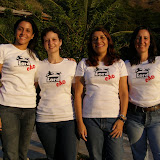
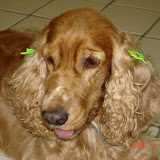

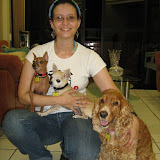
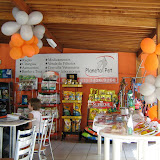

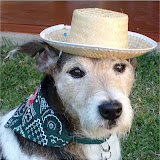


%5B2%5D+532.jpg)

Nenhum comentário:
Postar um comentário